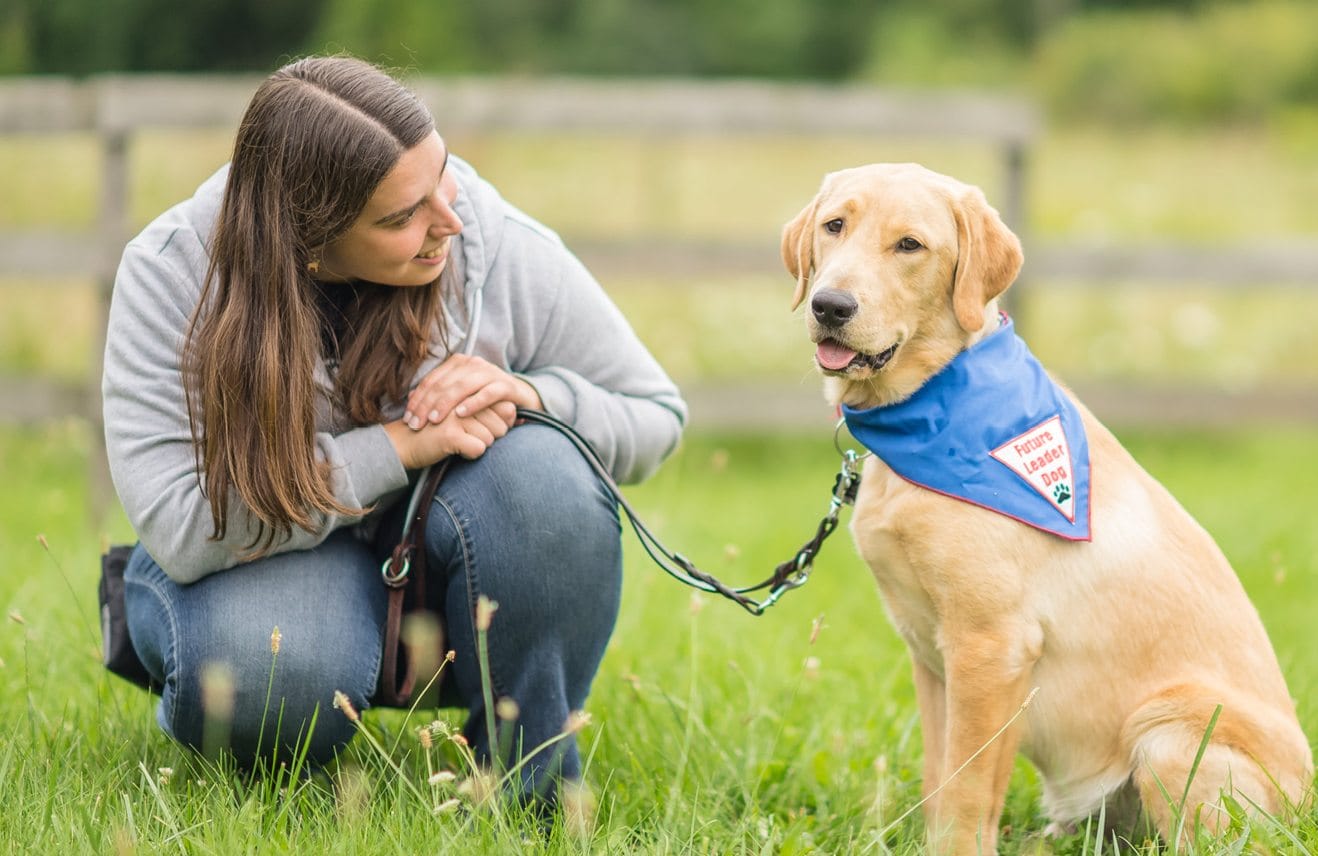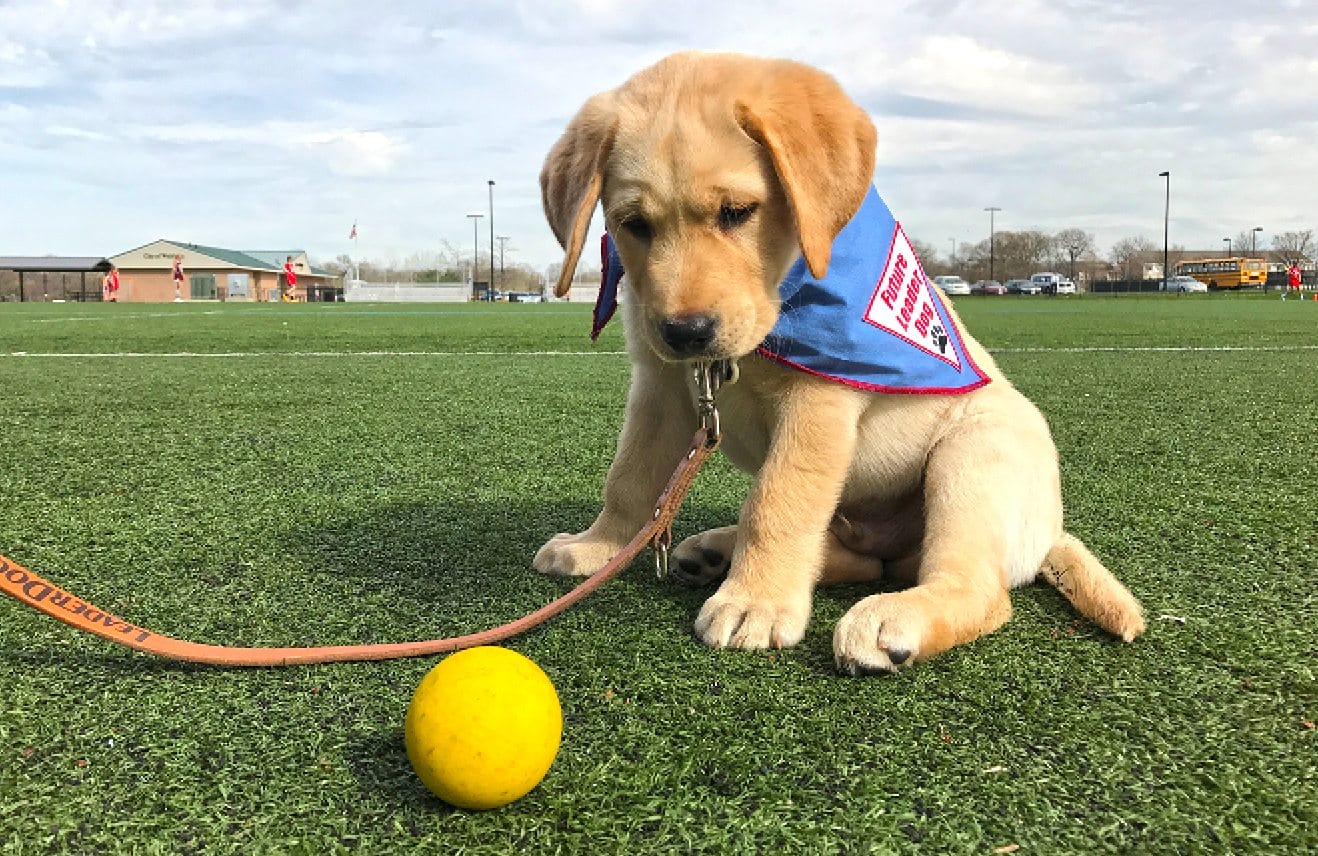
By Paul Teranes | Leader Dog Client and Board Member
The average day in the life of a Leader Dog varies as much as the life of its user. Some dogs spend most of the day in a work environment which may consist of lying under a desk or beside a machine. Some dogs may be partnered with a person who is unemployed or retired, and spend much of the day in a home environment. Some dogs may be working in a busy city or college campus environment leading its user on and off public transportation, and down crowded sidewalks and across busy intersections. Other Leader Dogs may be working in quiet neighborhoods enabling its user to run errands and to have the freedom to get out and walk whenever the user chooses.
As a Leader Dog user for over fifty years, I consider the behavior of the dog at home as important as the working ability of the dog when out in public.
No matter what circumstances or environment the Leader Dog finds it is working in, every Leader Dog has a home life. It is likely that the dog will spend more time in the home than working outside the home. You want a dog who can relax around the home spending much of the time lying quietly, without pacing around or barking at the window every time another dog walks by the house. You also want a dog you can trust that it will not get into food left out in the kitchen if you leave the kitchen. Likewise, you want a dog who knows the difference between its toys and a pair of shoes or socks that were left on the floor. You’ll want a dog that greets visitors with a sniff or two, as dogs are likely to do, but also to leave the visitor alone once they’re in the house. Of course, you do not want a dog that will relieve itself in the house, but this also depends on the responsibility of the user to take the dog out at least four times a day to relieve itself.
All dogs like to play, and people like to play with dogs. Playing is a mutually enjoyable activity, but the dog should know when playtime is over, and be able to settle down.
There are times when a Leader Dog must be left home alone. An example of this is that my wife and I ride a tandem bicycle, and when we go bike riding, I cannot take the dog. Some dogs have a greater separation anxiety than others. To alleviate separation anxiety, do not make a big production when leaving or coming back. Just make leaving and coming back an ordinary event. To adjust the dog to being home alone, leave for a short time, and come back. Extend the amount of time that you are gone until the dog realizes no matter how long you are gone, you will come back. You should leave some toys or a Nylabone out so that the dog can amuse itself when you are gone. It may be necessary to put your dog in a dog crate when left home alone. If this is the case, put a favorite toy or a Nylabone into the crate so that the dog does not get bored.
When a Leader Dog is at home and out of the harness, it should be allowed to be a dog, so that it will be rested and relaxed when the harness is back on.
Leader Dogs for the Blind empowers people who are blind, visually impaired or Deaf-Blind. And while all of our services are free of charge, we receive zero state or federal funding. Click here to help make an impact.

